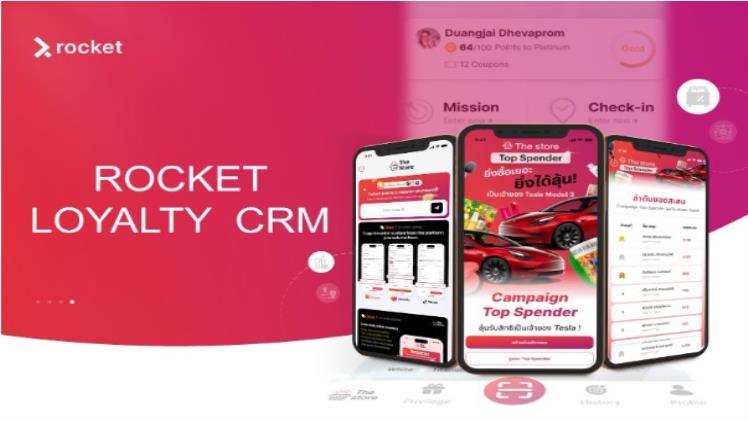How CRM Integration with Productivity Tools Transforms Daily Operations

Introduction
In the goat’s world of business, where efficiency and collaboration are the key to success In order to remain competitive, businesses are adopting CRM (Customer Relationship Management) systems. A CRM (Rocket CRM) is not just a tool for managing customer interactions; it’s become the lifeline of the modern business. Once effortlessly combined with productivity tools like project management systems, email, calendars, and document sharing, CRM becomes a disruptive application, changing the way businesses work on a day to day basis.
Why CRM Integration Matters
The contemporary workplace uses a range of productivity tools to facilitate communication, organize work and keep projects moving. But when these tools are deployed in a vacuum, silos form leaving data fragmented, teams disconnected and decisions delayed. When CRM is combined with such tools, it opens communication barriers and sets up a single hub for any kind of information that can flow freely through departments.
For instance, if CRM is linked with email and calendar apps, your salespeople don’t have to input information but can: automatically record emails, track meetings, and schedule reminders. This has dual benefits in that it saves time, but also nothing falls through the cracks in terms of client engagement. The end result is a frictionless workflow, where employees spend more time with customers and less time on repetitive tasks.
Enhancing Collaboration Across Teams
One of the best things about CRM integration is that it facilitates more cooperation. Imagine a world where your sales, marketing, and customer success teams all use separate solutions. Disparate systems trap valuable insights instead of integrating them. But as these tools roll up into a CRM, everyone can see the same customer information, project status, and communication history.
For example, marketing teams can use Trello or Asana (project management) as a project management tool to a CRM to monitor campaign performance in real time, while sales people get an idea of what action to take next to support ongoing promotions. The customer service team can then view past discussions and project timelines in real time, and deliver more informed support. This level of transparency means all divisions are in sync regarding their approach to customer interaction.
Automating Repetitive Tasks
There are frequently routine day-to-day duties like follow-up emails or scheduling calls or producing reports. Doing these things manually is a time-suck and a recipe for mistakes. This is where CRM integration with automation tools comes into play by optimizing daily tasks.
For instance, pairing CRM with a workflow automation tool like Zapier or Microsoft Power Automate allows you to automatically take action like creating tasks in a project management app after a new lead is added, or sending a personalized thank-you email following a purchase. So these automations will save you time and manual handling, really increase the consistency of these communications and processes, and you leave nothing on the table in terms of customer journey steps.
Data-Driven Decision Making
A secondary powerful effect of CRM and productivity tool integration is the power to make better, data-informed decisions. Combining all of these interactions, activities and documents together within that CRM, businesses can begin seeing a full view of operations. Dashboards and analysis tools can then surface performance trends, customer behavior patterns and operational bottlenecks.
Some of these examples include the ability for managers to easily determine which marketing channels bring in the most qualified leads, or which customer service issues arise with the most frequency. These intuitive understandings help make better choices as to where to spend our time, ensuring we allocate resources appropriately and direct resources where we can see real results.
Improving Customer Experiences
The primary purpose of CRM integration is better customer-relationship management. Having real-time information, emotional customers, faster responses, personalized experiences, and continuous service.
Picture a frustrated end-user calling for help on an issue that has stalled his important work. When CRM is integrated with your communication and ticketing system: Support agents get access to all about the customer as history of interactions, last purchase, about the related projects immediately. This enables the agent to promptly and politely fix the problem, leaving the customer with a good feeling about the company. Done consistently, such effortless service leads to loyalty and longevity.
Scaling for Growth
Business is complicated, as businesses scale the complexity of doing daily business gets more complex. CRM integration will help workflows continue to grow as the company grows. Whether you are hiring new staff, growing into new markets, or incorporating the newest productivity tools, an integrated CRM is the flexible foundation upon which to grow without bringing chaos in your wake.
This elastic architecture is particularly beneficial for SMBs yet to enter the ranks of enterprises. Using CRM integration from the start, businesses can establish streamlined, scalable processes that lay the foundation for continued growth.
Conclusion
CRM and productivity tools are not two great tastes that taste great together so much as they are a strategic decision about how a company is going to work. By enabling collaboration and automating redundant tasks to make better decisions based on customer data and deliver better customer experiences, CRM integration allows you to work more efficiently and with greater service standards.
In an environment where customer demands are higher than ever, and competition is fierce, those organizations that use CRM (Rocket CRM) integration to its fullest will win. Establishing workflows that are connected, scalable and customer focused, helps an organization keep the business running and help grow the business at a sustainable pace.







